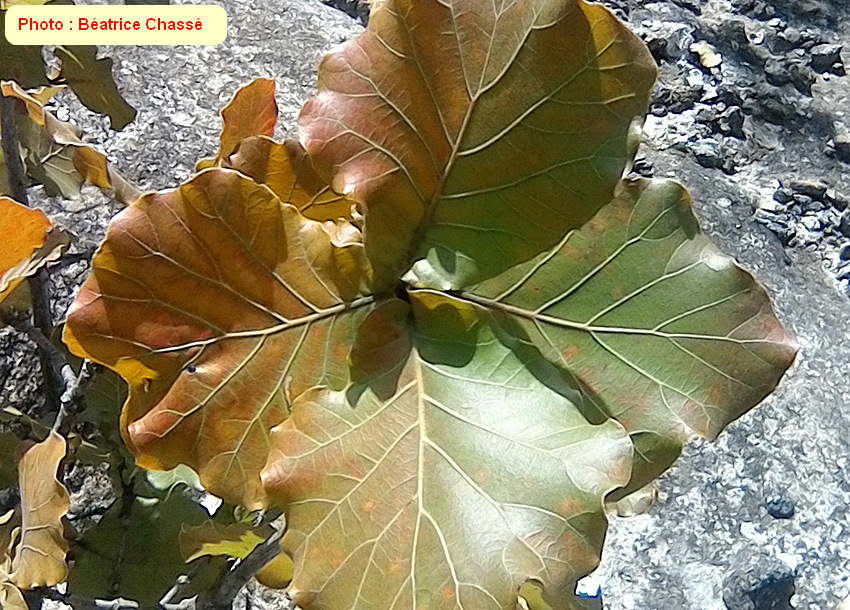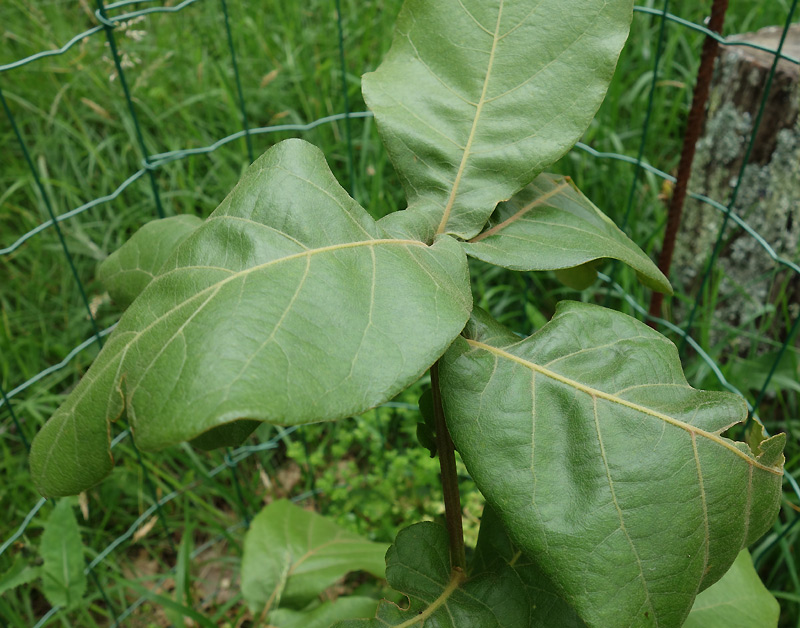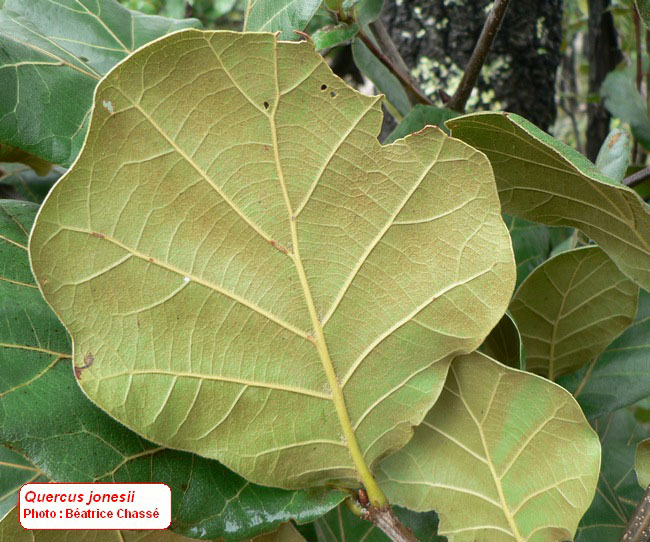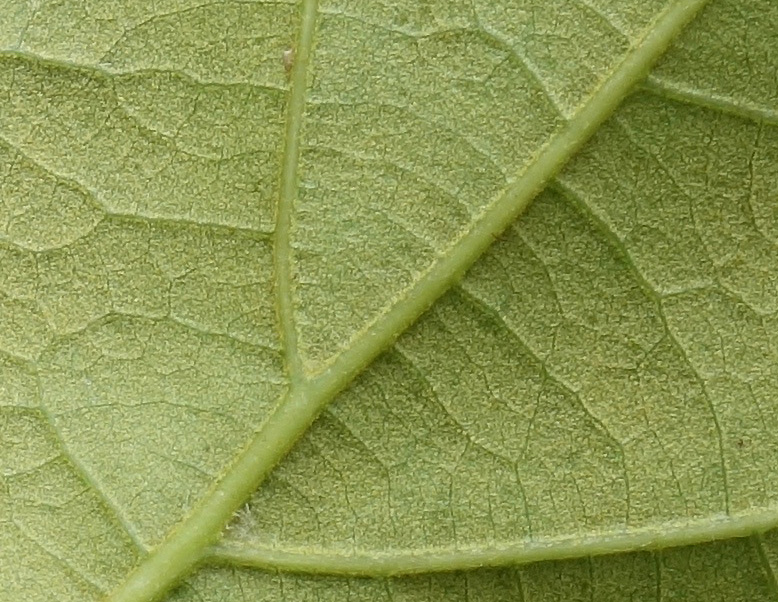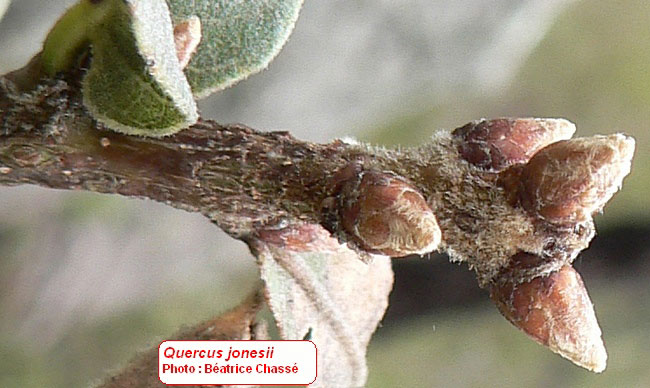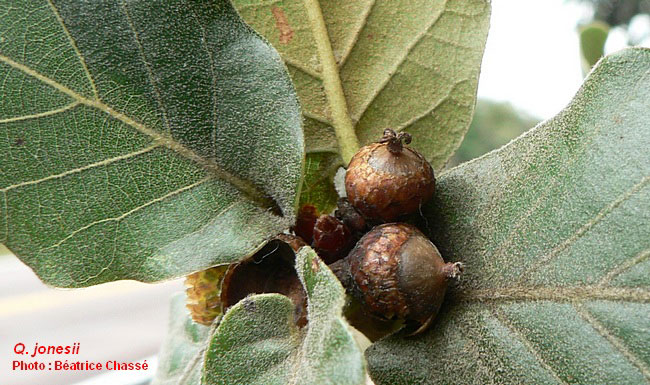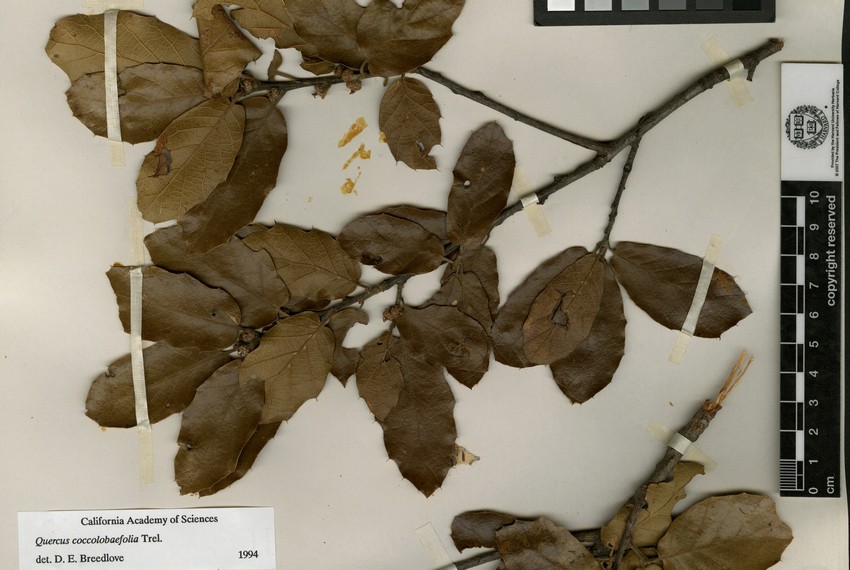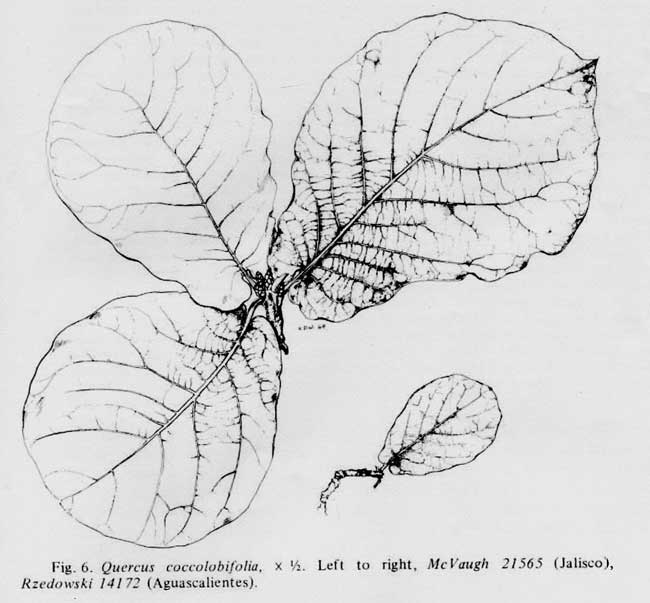| Quercus jonesii | |
| Author |
Trel. 1924 Mem. Natl. Acad. Sci. 20: 136 1924 Diagnosis here |
| Synonyms | aerea
Trel. 1924 Diagnosis here coccolobifolia Trel. 1924 Diagnosis here endlichiana Trel. 1924 |
| Local names | encino capulincillo ; |
| Range | Mexico (San Luis Potosi, Chihuahua, Durango, Aguascalientes, Guanajuato, Nuevo Leon, Sinaloa, Sonora) ; 600 - 2880 m ; |
| Growth habit | usually
6 m, sometimes to 10-15 m, with trunk 8-40 cm in diameter; |
| Leaves | 7-14 cm long, 6-12 wide; broadly oboval, oval or suborbicular; thick, leathery; adaxial surface smooth ; apex rounded sometimes acute and aristate; base cordate, auricled; margin thick, more or less revolute, entire, or sometimes with 1-5 pairs of bristle-tipped teeth; green above, slightly lustrous, with some short fascicled hairs, sessile or not, mainly along midrib and base, and sometimes golden uniseriate glandular hairs; paler beneath, yellowish, with scattered golden glandular hairs and stipitate fascicled hairs at axils, sometimes almost glabrous except axil tufts; 6-10 straight vein pairs, sometimes impressed adaxially; epidemis papillose; petiole 0.8-1.2 mm long, becoming glabrous; |
| Flowers | male
catkins 7-12 cm long, with around 13 flowers; pistillate flowers singly
or paired, on 1 cm long rachis; |
| Fruits | acorn
8-10 mm long, 5-8 mm in diameter; stalkless or on a 5 mm long peduncle,
solitary or 2-4 clustered at tip of branches; enclosed 1/3 or 1/2 by cup;
|
|
Bark, twigs and |
very
dark, fissured bark; twigs 3-6 mm in diameter, purplish, soon glabrous,
with numerous raised lenticels; bud 4-8 mm long, ovoid, pubescent, tawny;
|
| Hardiness zone, habitat | not hardy; prefers wet places; |
| Miscellaneous | --
A. Camus : n° 179; -- Sub-genus Quercus, section Lobatae, Series Erythromexicanae, Group Aristatae; -- For Govaerts & Frodin, 1998, and for S. Valencia-A., 2006, Q.aerea is a true species in Mexixo (Chihuahua), with small, ovoid-rounded buds, and with leaves "old golden bronze" couloured beneath, because of wax. -- For some Authors, the name of this taxon is coccolobifolia, and jonesii is a synonym.... -- Resembles Q. radiata which is reticulate adaxially, has a greater number of clustered acorns (to 8 or more) and abaxially with fascicled stipitate hairs on the whole surface of the blade. |
| Subspecies and varieties |
-- f. minor C.H.Muller
1936 differs from the type in having small leaves (4-6 cm x 2-3,5) with aristate teeth. |
| Pictures |
More pictures HERE
|

